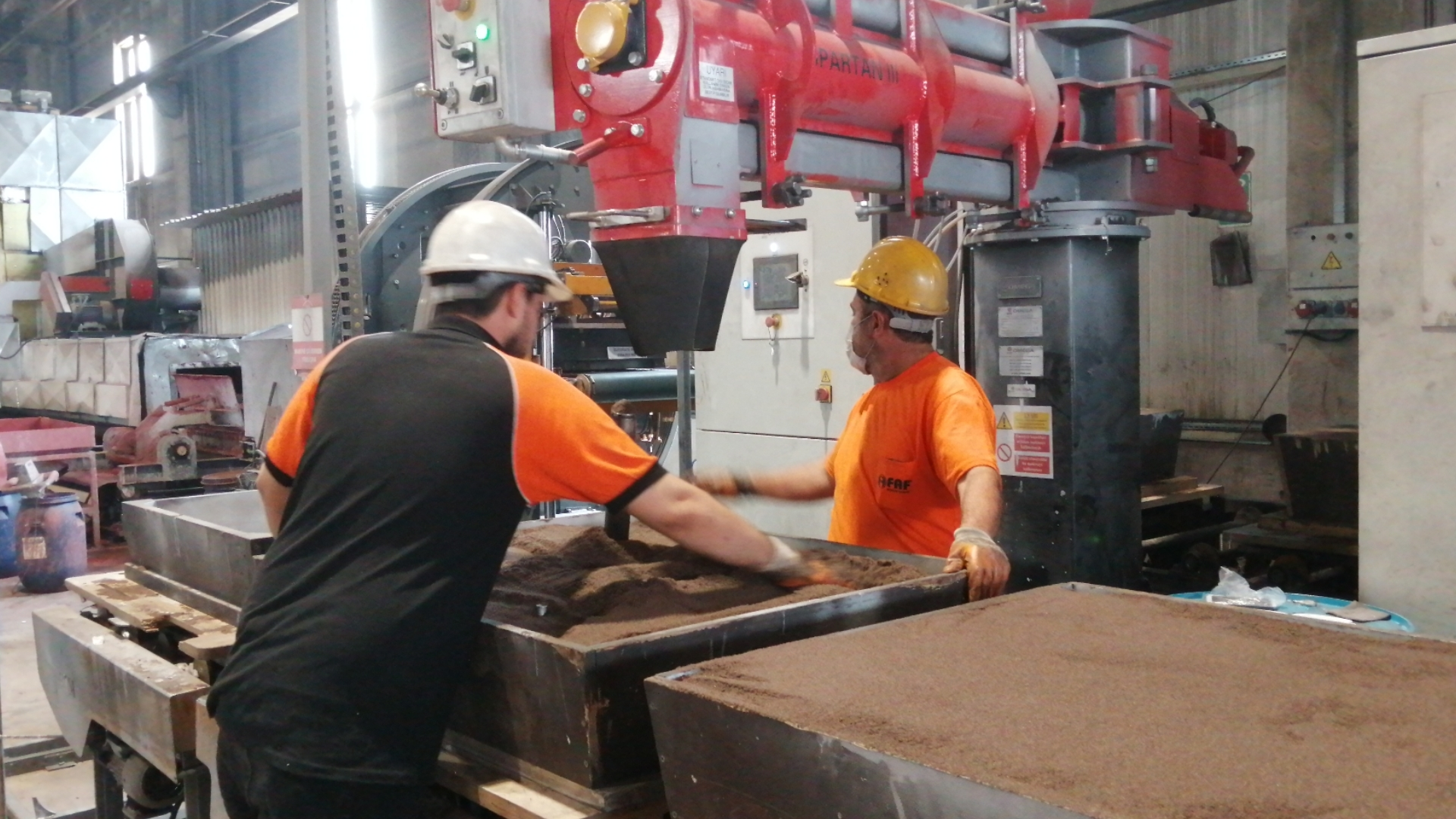Foundry sands are generally mineral grains of 0.05-2 mm in size. There are 2 types of casting sands. These are; natural sands and synthetic sands. Natural sands are used as they are obtained from nature. In other words, they are not subjected to any processing. The most usable feature of natural molding sand is that it can hold moisture for a long time. The worst part is that its properties are variable (unstable). But synthetic sand is generally used in the market. Synthetic sands are natural sands that have been processed (washed, impurities removed) and sieved to the desired grain size and shape. Therefore, less storage is needed. Since synthetic sands show the same properties everywhere, they are inseparable and can coexist. The sand for the metal to be cast is taken from here and molded. This means savings. But the most important feature of synthetic sands is that they are more gas permeable and more refractory (able to withstand temperature). In addition, synthetic sands are more stable than natural sands and the process is controllable. The most important feature expected from casting sands is gas permeability. If the sand mold does not transmit the gas, the gases coming from the metal during casting will create compression in the mold, causing porosities and explosions. Secondarily, the most important parameter expected is strength. The casting sand must have both wet and dry strength. If the required strength is not achieved, the mold will disintegrate during or after casting. In order to increase gas permeability, sand with angular geometry should be used so that the required gas outlet gaps are formed. However, if this gap increases too much, the strength will decrease. There are German (DIN) and Turkish (TS) standards for this ratio. Reducing the grain size and spheroidization of the grain shape will reduce gas permeability. Therefore, these should be avoided.
There are 4 types of casting sands. These are silica sand, zircon sand, chromite sand and olivine sand. Silica (SiO2) sand is the most widely used sand type in the market. Because it is both the cheapest and shows high refractoriness (2073 K). Zircon sand (ZrSiO4), on the other hand, has 2 times higher density (specific gravity) and high thermal conductivity than silica sand. This is the highest parameter that makes zircon sand important. If you have a casting material that you want to solidify quickly, that is, you want a homogeneous grain structure everywhere, you use zircon sand. But zircon sand is more expensive than silica sand. Chromite sand (FeCr2O4), like zircon sand, has a higher density and higher thermal conductivity than silica. In other words, the liquid metal temperature from the casting can be given to the environment immediately. This ensures rapid cooling. The difference from zircon sand is that the heat expansion is very low. Although the melting point is almost reached, there is no very high increase in the volume of the sand. This reduces casting defects. Olivine sand (MgSiO4) is a basic sand. As the amount of Mg in it increases, its basicity increases. Because Mg is basic under normal conditions. Therefore, austenitic high manganese steels can be cast with olivine sand (it does not react). In addition, its thermal conductivity is higher than quartz.
Although sand types are superior to silica sand in terms of some technical properties, as mentioned above, the sand used in casting is generally silica sand. This is because it is cheap, easily available and refractory.

